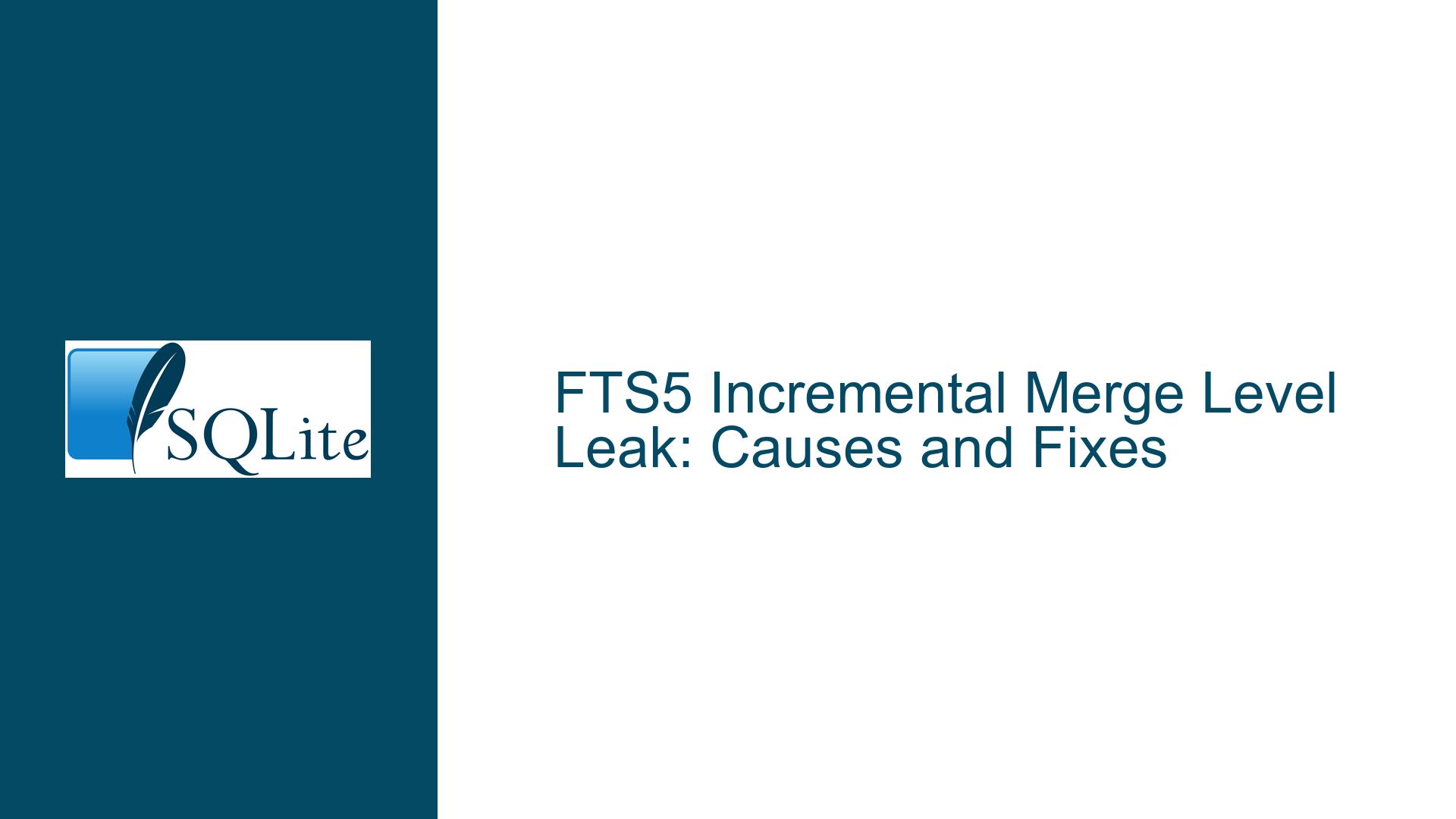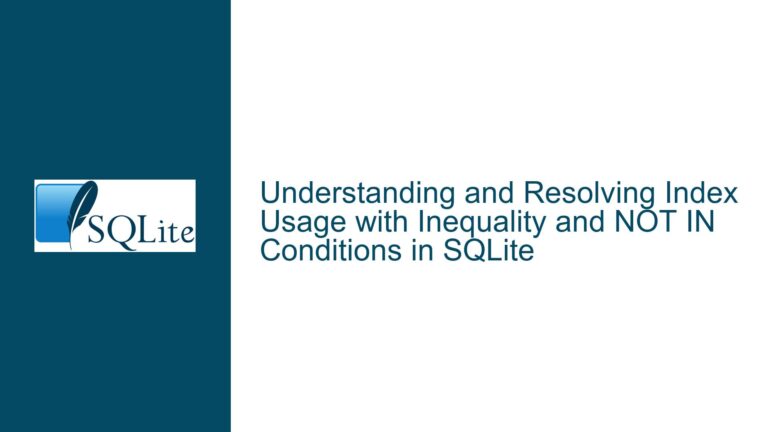FTS5 Incremental Merge Level Leak: Causes and Fixes
Understanding the FTS5 Incremental Merge Level Leak Issue
The FTS5 (Full-Text Search) extension in SQLite is a powerful tool for enabling full-text search capabilities within SQLite databases. It allows users to create virtual tables that can efficiently index and search large amounts of text data. However, a critical issue has been identified in the FTS5 incremental merge process, leading to what is referred to as a "level leak." This issue manifests when the FTS5 index structure accumulates empty levels during incremental merges, eventually leading to corruption when the number of levels exceeds a certain threshold (in this case, 2000 levels).
The FTS5 index structure is organized into levels, each containing segments that represent portions of the indexed data. During an incremental merge, segments from lower levels are merged into higher levels to optimize the index. However, if the merge process is interrupted or not completed, empty levels can be created. These empty levels do not contain any segments but are still part of the index structure. Over time, as more incomplete merges occur, the number of empty levels grows, leading to a "level leak."
The level leak becomes problematic when the number of levels reaches the maximum limit (2000 levels). At this point, the FTS5 index structure can no longer be parsed correctly, resulting in corruption errors. This issue is particularly concerning for applications that rely heavily on FTS5 for search functionality, as it can lead to data loss or the inability to perform searches.
Root Causes of the FTS5 Level Leak
The primary cause of the FTS5 level leak is the improper handling of incremental merges, especially when the merge process is interrupted or not completed. The FTS5 documentation suggests that the first call to the ‘merge’ command should specify a negative parameter, while subsequent calls should specify a positive value to ensure that the merge process runs to completion. However, this recommendation is not strictly enforced, leading to potential misuse.
When an application initiates an incremental merge but does not complete it (e.g., due to the application being closed or other interruptions), the FTS5 index structure can end up with empty levels. These empty levels are created as part of the merge process but are not properly cleaned up if the merge is not completed. Over time, as more incomplete merges occur, the number of empty levels accumulates, leading to the level leak.
Another contributing factor is the optimization strategy used by FTS5 to manage the index structure. Empty levels are intentionally left in place to allow lower levels to grow before merging them with higher levels. This optimization is designed to improve performance by reducing the frequency of large merges. However, this strategy can backfire if the merge process is not managed correctly, leading to the accumulation of empty levels and eventual corruption.
Resolving the FTS5 Level Leak: Steps, Solutions, and Fixes
To address the FTS5 level leak issue, several steps can be taken to ensure that the incremental merge process is handled correctly and that empty levels are properly managed. The following solutions and fixes have been proposed and implemented to mitigate the level leak problem:
Enforcing Merge Completion: The most critical step in resolving the level leak issue is to ensure that incremental merges are completed properly. This can be achieved by strictly adhering to the FTS5 documentation’s recommendation regarding the use of negative and positive parameters in the ‘merge’ command. Specifically, the first call to ‘merge’ should specify a negative parameter, while subsequent calls should specify a positive value to ensure that the merge process runs to completion, even if new segments are added to the index.
Limiting the Number of Levels: To prevent the accumulation of empty levels, a limit can be imposed on the number of levels in the FTS5 index structure. In the patch provided by Dan Kennedy, the maximum number of levels is set to 63. This limit ensures that the index structure does not grow beyond a manageable size, reducing the risk of corruption. Additionally, the patch ensures that segments are not moved to higher levels once the maximum level is reached, preventing the creation of empty levels above the limit.
Cleaning Up Empty Levels: Another approach to resolving the level leak issue is to clean up empty levels during the merge process. This can be done by modifying the FTS5 code to remove empty levels when serializing the index structure to disk. This approach was initially proposed by Fedor Indutny but was later reconsidered due to its potential impact on performance. However, with careful implementation, it may be possible to clean up empty levels without significantly affecting the performance of the FTS5 index.
Reproducing and Testing the Issue: To ensure that the proposed solutions effectively address the level leak issue, it is essential to reproduce the problem in a controlled environment and test the fixes. Fedor Indutny provided a reproducible test case that demonstrates the level leak issue. By running this test case and verifying that the fixes prevent the accumulation of empty levels, developers can confirm that the issue has been resolved.
Updating Documentation: Finally, updating the FTS5 documentation to emphasize the importance of completing incremental merges can help prevent future occurrences of the level leak issue. The documentation should clearly state that the first call to ‘merge’ must specify a negative parameter, and subsequent calls must specify a positive value to ensure that the merge process is completed. This change can help developers avoid the pitfalls of incomplete merges and reduce the risk of index corruption.
In conclusion, the FTS5 level leak issue is a significant concern for applications that rely on FTS5 for full-text search functionality. By understanding the root causes of the issue and implementing the proposed solutions, developers can effectively mitigate the risk of index corruption and ensure the reliable operation of their FTS5 indexes. The combination of enforcing merge completion, limiting the number of levels, cleaning up empty levels, reproducing and testing the issue, and updating documentation provides a comprehensive approach to resolving the FTS5 level leak problem.






